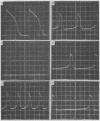Abstract
Long-term clinical studies have associated tolbutamide therapy with an increased incidence of cardiovascular deaths. The effects of this and other sulfonylurea drugs on contractility and rate of isolated rabbit atria, automaticity of isolated dog Purkinje fibers, and adenyl cyclase activity in particulate preparations of rabbit and human hearts were studied. At concentrations that are attained clinically, tolbutamide (10 mg/100 ml) increased contractility of driven rabbit atria to 124±5% of control, acetohexamide (3.9 mg/100 ml) to 140±5%, chlorpropamide (8.3 mg/100 ml) to 139±6%, and tolazamide (3.1 mg/100 ml) to 119±6%. These effects were accentuated in the presence of 2.5 × 10-4 M theophylline and were not blocked by 1 × 10-5 M propranolol. Adenyl cyclase was activated by each of these drugs at concentrations below those which increase contractility. The drugs also increased the rate and slope of phase 4 depolarization in spontaneously beating Purkinje fibers, but did not alter the spontaneous rate of isolated rabbit atria. Since inotropic and chronotropic stimulation can be deleterious in some clinical settings, these findings may be of significance in interpretation of cardiovascular mortality data.
Full text
PDF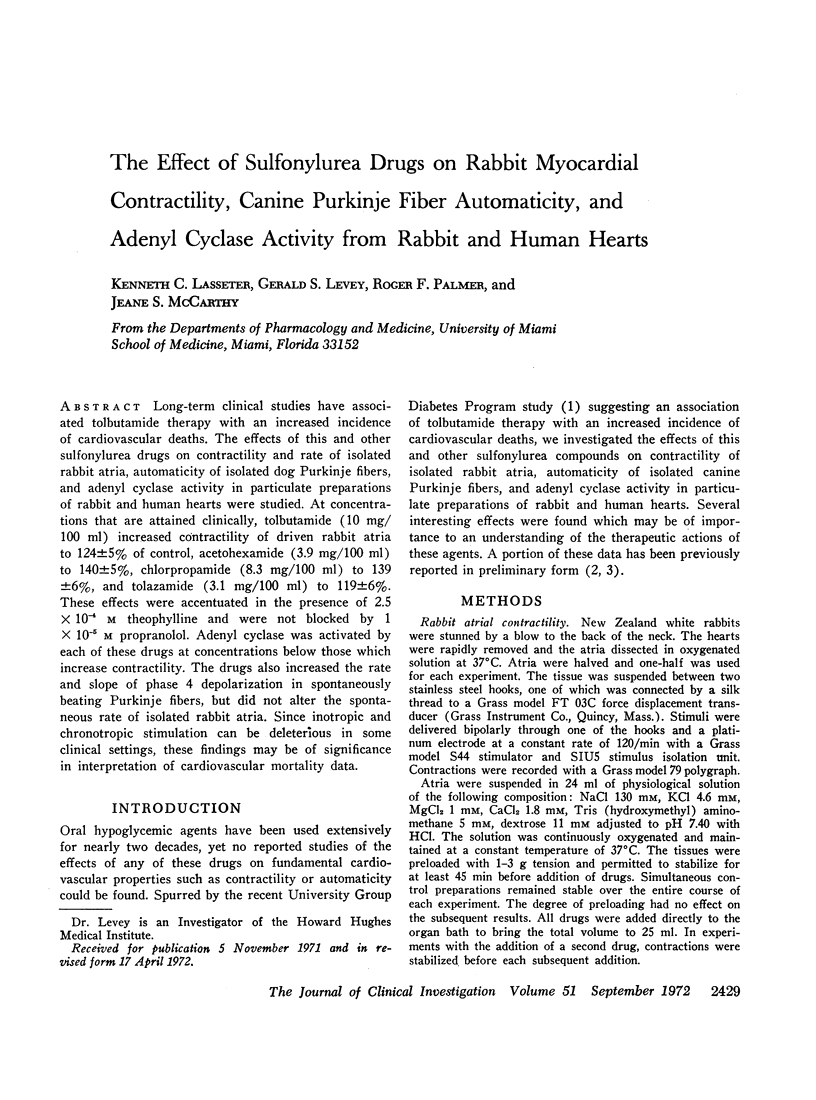
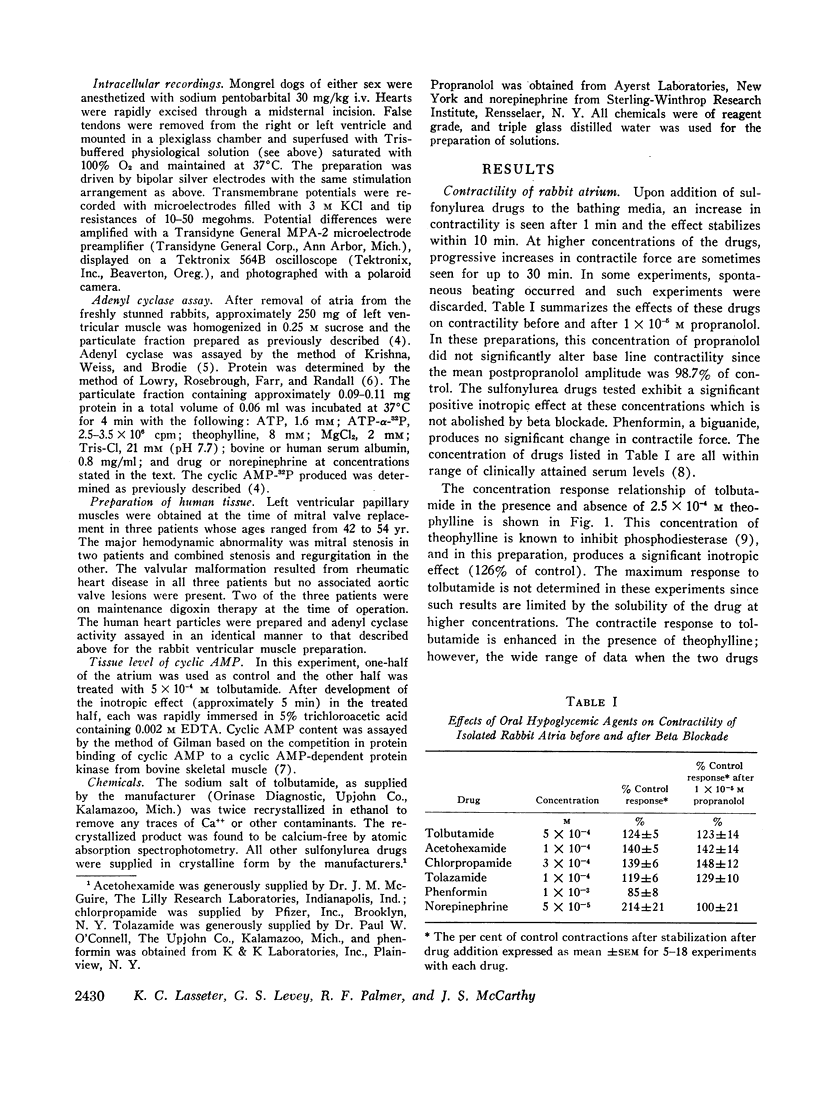
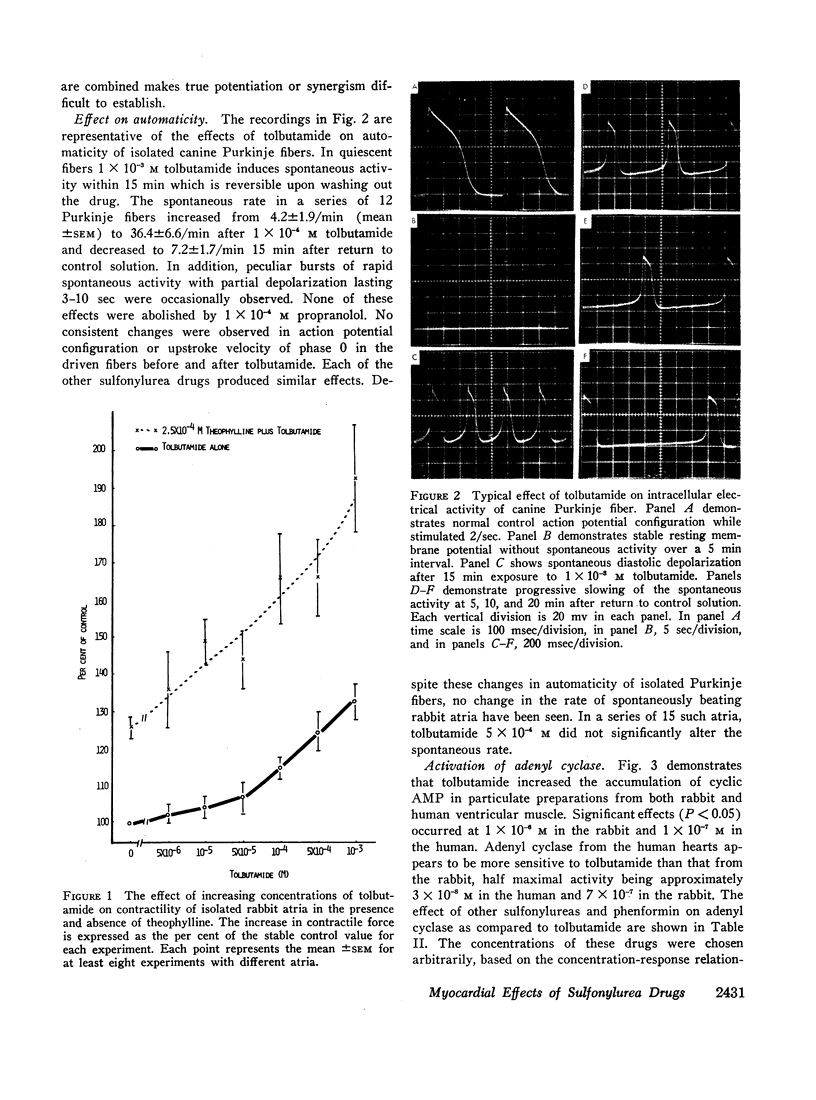
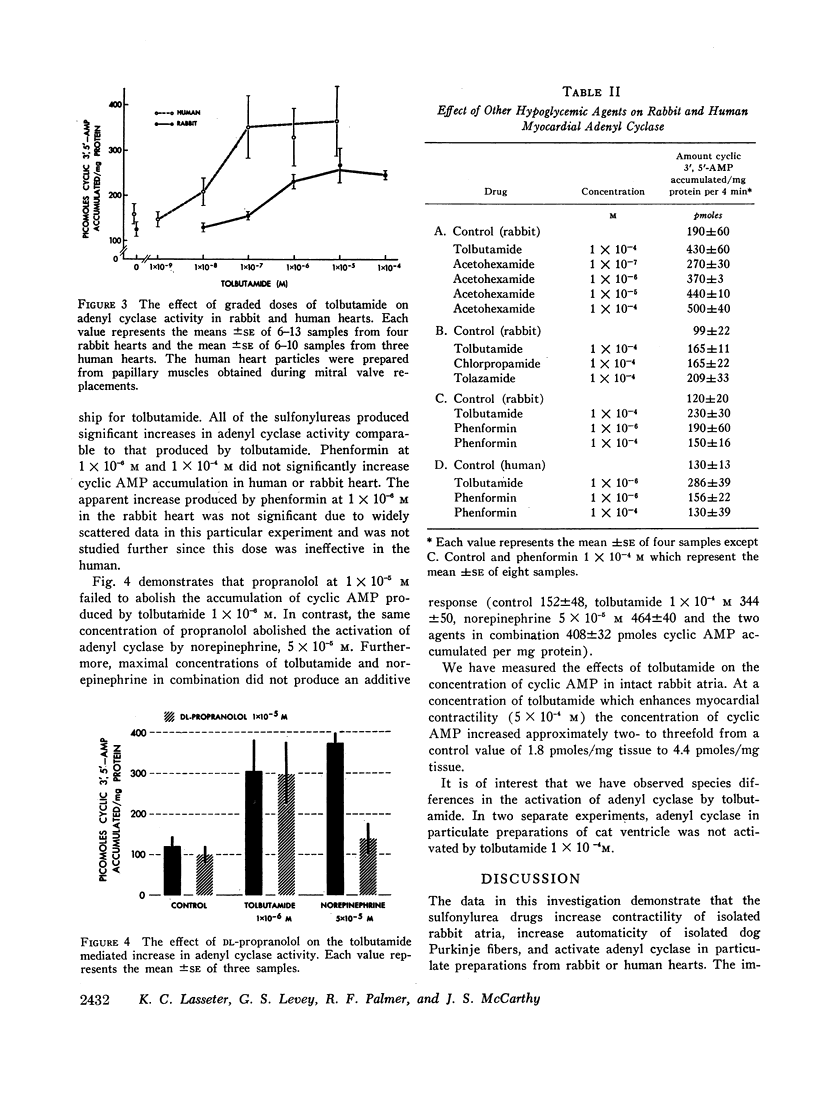
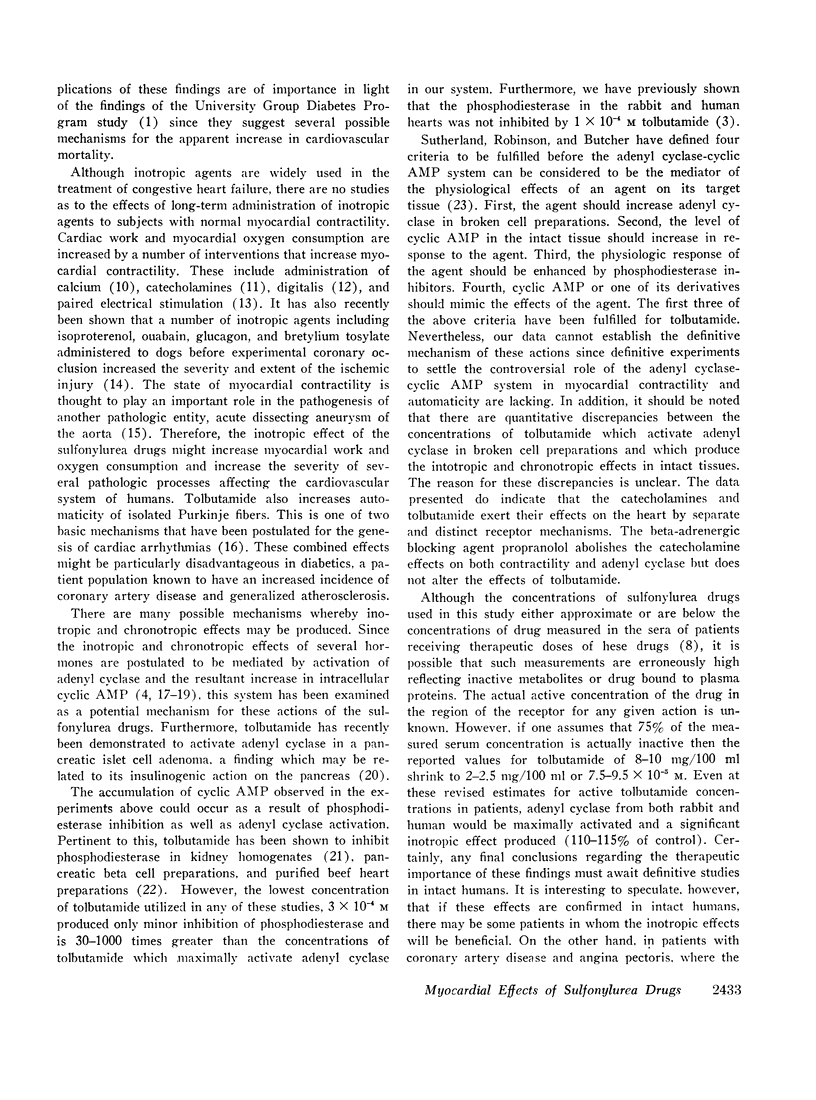
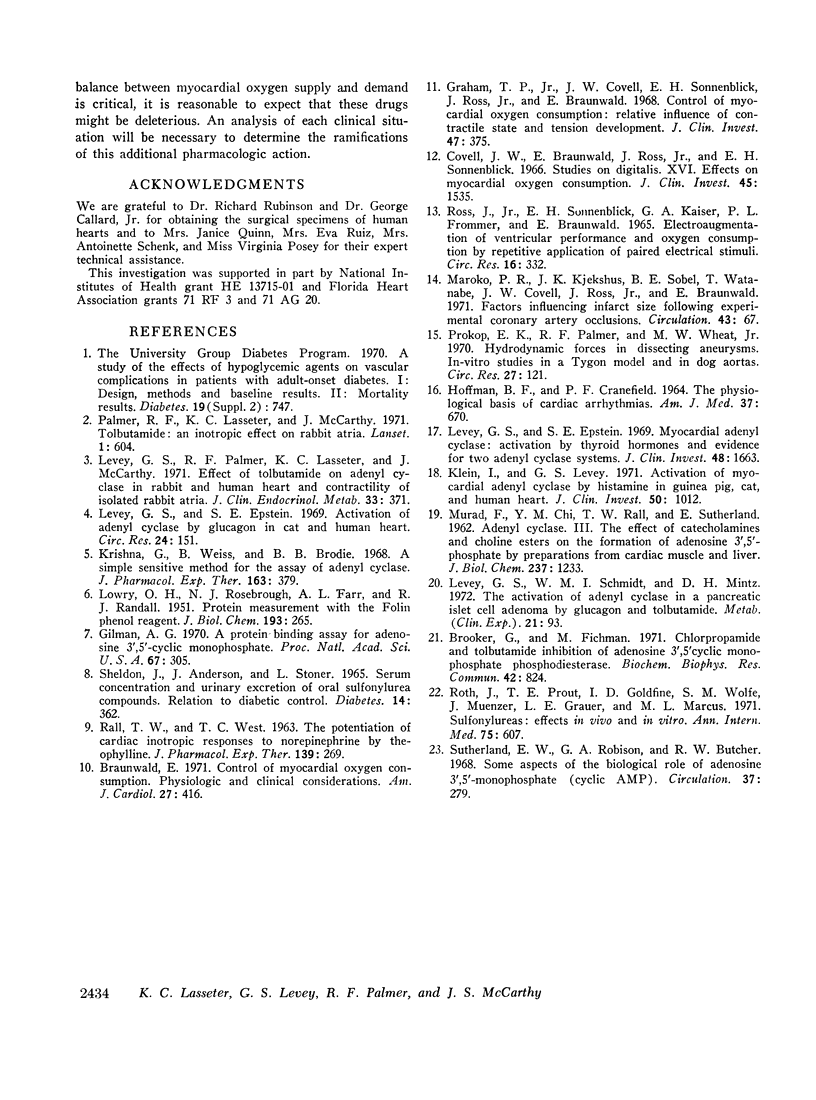
Images in this article
Selected References
These references are in PubMed. This may not be the complete list of references from this article.
- Braunwald E. Control of myocardial oxygen consumption: physiologic and clinical considerations. Am J Cardiol. 1971 Apr;27(4):416–432. doi: 10.1016/0002-9149(71)90439-5. [DOI] [PubMed] [Google Scholar]
- Brooker G., Fichman M. Chlorpropamide and tolbutamide inhibition of adenosine 3'5' cyclic monophosphate phosphodiesterase. Biochem Biophys Res Commun. 1971 Mar 5;42(5):824–828. doi: 10.1016/0006-291x(71)90504-3. [DOI] [PubMed] [Google Scholar]
- Covell J. W., Braunwald E., Ross J., Jr, Sonnenblick E. H. Studies on digitalis. XVI. Effects on myocardial oxygen consumption. J Clin Invest. 1966 Oct;45(10):1535–1542. doi: 10.1172/JCI105460. [DOI] [PMC free article] [PubMed] [Google Scholar]
- Gilman A. G. A protein binding assay for adenosine 3':5'-cyclic monophosphate. Proc Natl Acad Sci U S A. 1970 Sep;67(1):305–312. doi: 10.1073/pnas.67.1.305. [DOI] [PMC free article] [PubMed] [Google Scholar]
- Graham T. P., Jr, Covell J. W., Sonnenblick E. H., Ross J., Jr, Braunwald E. Control of myocardial oxygen consumption: relative influence of contractile state and tension development. J Clin Invest. 1968 Feb;47(2):375–385. doi: 10.1172/JCI105734. [DOI] [PMC free article] [PubMed] [Google Scholar]
- HOFFMAN B. F., CRANEFIELD P. F. THE PHYSIOLOGICAL BASIS OF CARDIAC ARRHYTHMIAS. Am J Med. 1964 Nov;37:670–684. doi: 10.1016/0002-9343(64)90017-8. [DOI] [PubMed] [Google Scholar]
- Klein I., Levey G. S. Activation of myocardial adenyl cyclase by histamine in guinea pig, cat, and human heart. J Clin Invest. 1971 May;50(5):1012–1015. doi: 10.1172/JCI106571. [DOI] [PMC free article] [PubMed] [Google Scholar]
- Krishna G., Weiss B., Brodie B. B. A simple, sensitive method for the assay of adenyl cyclase. J Pharmacol Exp Ther. 1968 Oct;163(2):379–385. [PubMed] [Google Scholar]
- LOWRY O. H., ROSEBROUGH N. J., FARR A. L., RANDALL R. J. Protein measurement with the Folin phenol reagent. J Biol Chem. 1951 Nov;193(1):265–275. [PubMed] [Google Scholar]
- Levey G. S., Epstein S. E. Activation of adenyl cyclase by glucagon in cat and human heart. Circ Res. 1969 Feb;24(2):151–156. doi: 10.1161/01.res.24.2.151. [DOI] [PubMed] [Google Scholar]
- Levey G. S., Epstein S. E. Myocardial adenyl cyclase: activation by thyroid hormones and evidence for two adenyl cyclase systems. J Clin Invest. 1969 Sep;48(9):1663–1669. doi: 10.1172/JCI106131. [DOI] [PMC free article] [PubMed] [Google Scholar]
- Levey G. S., Palmer R. F., Lasseter K. C., McCarthy J. Effect of tolbutamide on adenyl cyclase in rabbit and human heart and contractility of isolated rabbit atria. J Clin Endocrinol Metab. 1971 Aug;33(2):371–374. doi: 10.1210/jcem-33-2-371. [DOI] [PubMed] [Google Scholar]
- MURAD F., CHI Y. M., RALL T. W., SUTHERLAND E. W. Adenyl cyclase. III. The effect of catecholamines and choline esters on the formation of adenosine 3',5'-phosphate by preparations from cardiac muscle and liver. J Biol Chem. 1962 Apr;237:1233–1238. [PubMed] [Google Scholar]
- Maroko P. R., Kjekshus J. K., Sobel B. E., Watanabe T., Covell J. W., Ross J., Jr, Braunwald E. Factors influencing infarct size following experimental coronary artery occlusions. Circulation. 1971 Jan;43(1):67–82. doi: 10.1161/01.cir.43.1.67. [DOI] [PubMed] [Google Scholar]
- Palmer R. F., Lasseter K. C., McCarthy J. Tolbutamide: an inotropic effect on rabbit atria. Lancet. 1971 Mar 20;1(7699):604–604. doi: 10.1016/s0140-6736(71)91208-6. [DOI] [PubMed] [Google Scholar]
- Prokop E. K., Palmer R. F., Wheat M. W., Jr Hydrodynamic forces in dissecting aneurysms. In-vitro studies in a Tygon model and in dog aortas. Circ Res. 1970 Jul;27(1):121–127. doi: 10.1161/01.res.27.1.121. [DOI] [PubMed] [Google Scholar]
- RALL T. W., WEST T. C. The potentiation of cardiac inotropic responses to norepinephrine by theophylline. J Pharmacol Exp Ther. 1963 Mar;139:269–274. [PubMed] [Google Scholar]
- ROSS J., Jr, SONNENBLICK E. H., KAISER G. A., FROMMER P. L., BRAUNWALD E. ELECTROAUGMENTATION OF VENTRICULAR PERFORMANCE AND OXYGEN CONSUMPTION BY REPETITIVE APPLICATION OF PAIRED ELECTRICAL STIMULI. Circ Res. 1965 Apr;16:332–342. doi: 10.1161/01.res.16.4.332. [DOI] [PubMed] [Google Scholar]
- SHELDON J., ANDERSON J., STONER L. SERUM CONCENTRATION AND URINARY EXCRETION OF ORAL SULFONYLUREA COMPOUNDS: RELATION TO DIABETIC CONTROL. Diabetes. 1965 Jun;14:362–367. doi: 10.2337/diab.14.6.362. [DOI] [PubMed] [Google Scholar]
- Sulfonylureas: effects in vivo and in vitro. Ann Intern Med. 1971 Oct;75(4):607–621. doi: 10.7326/0003-4819-75-4-607. [DOI] [PubMed] [Google Scholar]



